Culture is the way of life of a group people and this article is the compilation of some beautiful Tanzania people forming giving out the best of culture in the country.
Tanzania is the thirteenth largest country in Africa. It is bordered to the north by Kenya and Uganda, to the east by Burundi, Rwanda and the Democratic Republic of Congo, to the south by Mozambique, Malawi, and Zambia. This breathtaking country is home to some of the best safari attractions in the world, rich cultural heritage, and over 120 distinct Tanzania tribes and ethnic groups.
Recommended reading.. Interesting Facts You Need To Know About Tanzania In Africa
There are many tribes in the country Tanzania with beautiful people coming out with unique culture. Among Tanzania’s most diverse, unique and indigenous tribes includes:
The Maasai Tribe
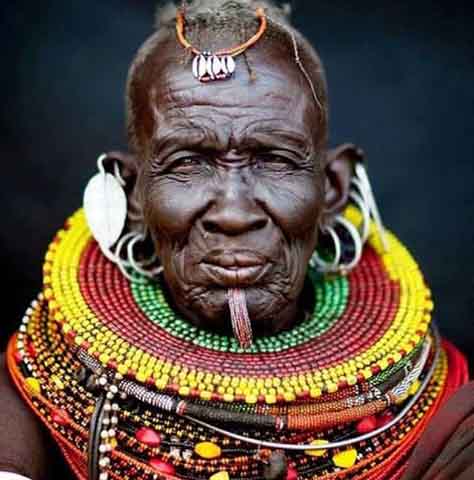
An indigenous group of semi-nomadic people that settled in northern Tanzania and Kenya. The Maasai tribe are internationally known and are among the most popular ethnic groups due to their distinct traditions, clothing, and their close residence to the many national parks in East Africa.
According to oral history, they originated North of Lake Turkana (north-west of Kenya) in the lower Nile valley. In the 15th century, they began migrating south and arrived along a land stretching across Tanzania and Kenya border, covering the Great Rift valley and adjacent lands from Dodoma and Mt Marsabit.
The Maasai tribe are known for their brightly colored outfits and traditional lifestyle concentrated on cattle which make up the primary source of food. The wealth of a man is measured in terms of children and cattle but is also considered poor if he has many cattle but not children. Though they use spears and shields, they were most feared for their ability to expertly throw the orinka (club) from up to 70 paces(100 meters approximately).
The Maasai tribe resides north of Lake Turkana (northwest Kenya) in the lower Nile valley and northern Tanzania.
Firmly patriarchal in nature, most major disputes and matters are sometimes resolved or determined by retired elders and elder Maasai men. They are monolithic in nature and believe in their god called Enkai or Engai. The Maasai music comprises traditionally of rhythms rendered by a chorus of harmonies sung by vocalists while the olaranyani (song leader) sings the melody.
The Datoga Tribe
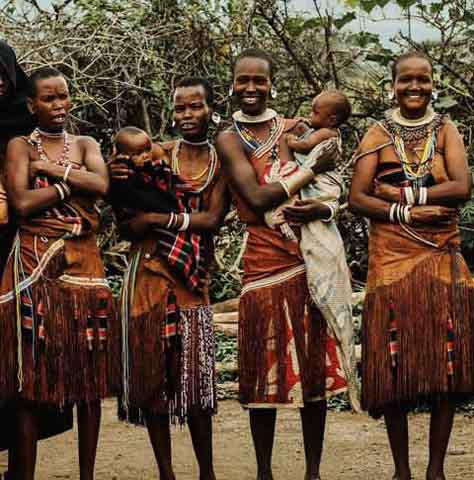
The Dagota tribe is also known as the Mang’ati in Swahili. Datoga people are known as an agro-pastoral nomadic Nilotic speaking tribe, residing in Manyara and Singida region of north-central Tanzania near Mt Hanang, lake Basotu and Lake Eyasi. With well over 10 subtribes, its best subtribe is the pastoral Barabaig who also reside mainly in the northern volcanic highlands encompassed by Mt Hanang which is a sacred mountain to the Barabaig.
Their migratory history has been somewhat reconstructed through the study of comparative linguistics and oral tradition of the Datoga and its neighbors. They are said to be from South Sudan or Western Ethiopia highlands. As their ancestors gradually migrated southward, this resulted in settlements in the highland areas of Kenya and Tanzania by speakers of Nilotic languages, herding, and farming in the rich highlands by about AD 1500.
The Datoga tribe consider themselves as the oldest tribe in Tanzania (other tribes like the Maasai and the Bushmen also claim this fame). They are characteristically known for keeping to themselves and are a tribe of proud people and fierce warriors known for their stealth ability. They are skillful and are also known for their blacksmith skills, beads works, brass bracelets, and necklaces, while also supplying arrowheads to the Hadzabe tribe. Though they are known to herd goats, donkeys, sheep and raise chickens, cattle are their most important domestic animals.
The Datoga tribe resides in the Singida and Manyara region of north-central Tanzania close to the Mt Hanang, Lake Eyasi, and lake Basotu.
The Datoga’s through the color of their outfits, blend in with their environment with a reddish brown color soil outfit, reddish patched leather dresses, beadworks, bracelets, and necklaces. Another cultural identity and feature of theirs that distinguishes them from other tribes is their decorative tattooing around their eyes in circular patterns.
The Hadzabe Tribe
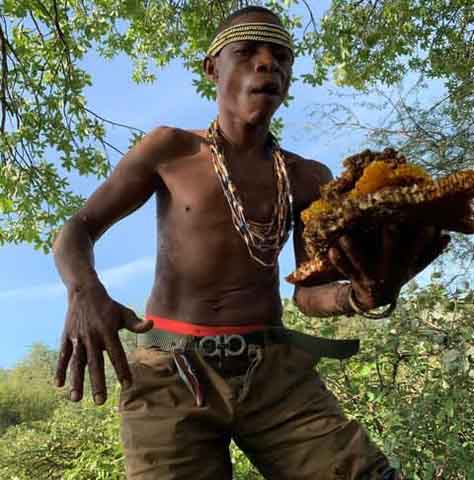
This indigenous ethnic group resides in north-central Tanzania, dwelling near Lake Eyasi in the central rift valley and in the neighboring plateaus of the Serengeti. The impact of tourism and pastoralist encroachment has for many years posed a severe threat to the continuation of their traditional way of life.
The oral history of the Hadzabe’s tribes past is divided into four epochs, with each epoch inhabited by a different culture. The archaeological and genetic history of the Hadza’s reveals that they are not closely related to any other tribe, although their language was once classified with the Khoisan languages because it has clicks, there is relatively no evidence that they are related.
The Hadzabe tribe became part of the German East Africa but soon came under British control at the end of the World War I. Several attempts were also made by the British and the Tanzanian government to make the Hadzabe settle and adopt farming, but all their attempts failed as the Hadzabe people only settled to take advantage of the food provided, but leave and go back to foraging when the supply of food runs out.
As one of the descendants of Tanzania’s aboriginal hunter-gathering population, the Hadzabe tribe has a division of labour that is split between foraging and hunting. While Hadzabe men usually forage individually, women are known generally to forage with at least one adult male accompanying the group. The Hadzabe women usually carry digging sticks, large skin pouches for carrying items like knives, shoes, clothing and various other items held in the pouch around their neck, with a grass basket for carrying berries while foraging.
Their diet consists mainly of honey, fruits, tuber, and meat. The availability of meat to their diet increases during the dry season when men often hunt in pairs hoping to shoot animals with their bows and poisoned arrows. They are highly skilled hunters and are known for their selective skills in hunting, foraging and their vast knowledge of plants, fruits, tubers, and wild animals.
The Hadzabes reside around Lake Eyasi, located just south of the Serengeti. Their lands are full of mostly baobab fruit trees and other bush trees that provide for their livelihood.
The Hadzabe’s are semi-nomadic hunter-gatherers that are culturally and linguistically members of the Khoi (Person) and San (Foragers) group. They have close affinities with the Sandiwe people who possess cultural connections with the Khoekhoe hunter-gatherers communities of Southern Africa.
Women are adorned with “Hangweda“ made of local pieces of skin, while the Hadzabe men are polygamists with a patriarchal social system.
The Chagga Tribe
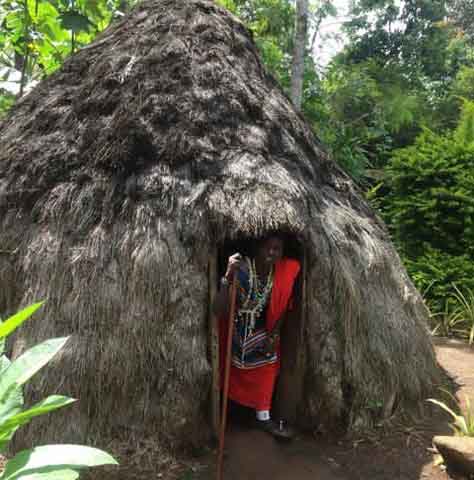
The Chagga people (also known as Wachagga, Jagga, Dschagga, Waschagga) are a Bantu speaking indigenous and the third largest ethnic group in Tanzania tribes.
The Chagga tribe were divided into small autonomous chiefdoms traditionally belonging to different clans ruled by Mangis (chiefs). The system of chiefdom was practiced until it was abolished throughout the country after Tanzania’s independence in 1961.
The Chagga tribe are known for their sense of enterprise, politics and strong work ethics. They engage in small scale businesses, while the young workers are clerks, teachers, and administrators.
The Chagga tribe resides on the southern slopes of Mt Kilimanjaro which has two peaks namely Kibo and Mawenzi.
Greetings are an important part of Chagga culture. Their marriage ceremonies were usually a long process traditionally, beginning with betrothed proceedings that continue long after the couple was married.
Today, Christian couples are married in churches with great importance placed on giving birth to a son to continue the lineage. At the age of 12, a rite called Kisusa is carried out for every child performed to curb unruliness, and after a month, a purification ceremony is celebrated, and a goat is sacrificed.
The Sonjo Tribe
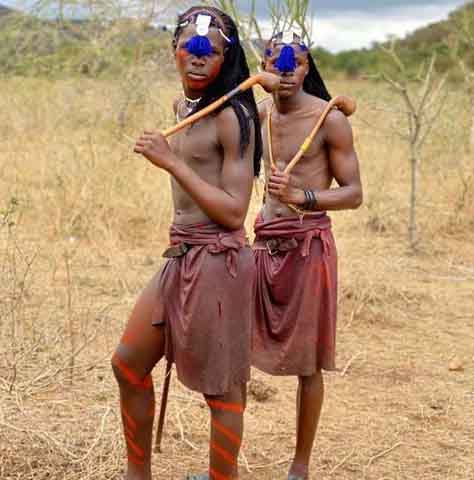
The Sonjo people are a Bantu people and their primary way of life is based solely on herding and agriculture. They are known to use traditional irrigation systems when farming.
The Sonjo people are said to have lived in northern Tanzania for centuries secluded within the Maasai territory. They are believed to have migrated to East Africa 400 years ago from Central Africa.
The Sonjo tribe is known for their agricultural way of life which was believed to be the major reason their migration took place little by little over thousands of years in search of fertile and well-watered land to cultivate their crops.
The Sonjo tribe reside in northern Tanzania, in the Ngorongoro district about 30-40 miles west of Lakes Natron.
Music plays a forestanding role in the Sonjo culture. Music shapes their entire way of life and is a widely practiced art in the entire community. It is used for several ritual purposes, rainmaking ceremonies, healing ceremonies, marriages, and other festive or civil events.
Thank you for reading this article.
Kindly follow our social media handles and let’s get interactive.
Related articles
Things To Know About Nigeria Culture
